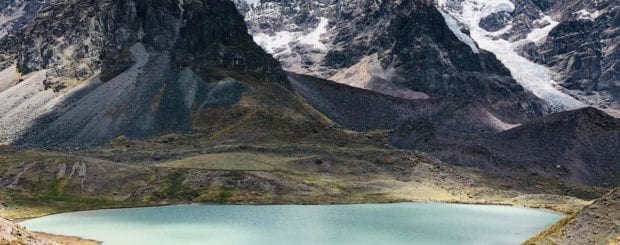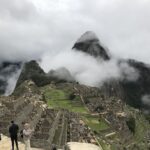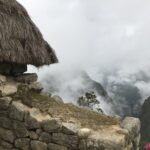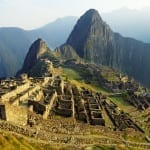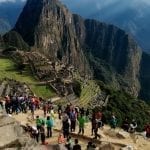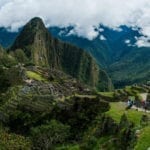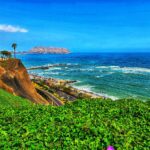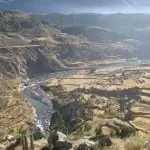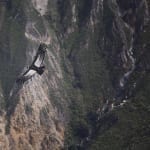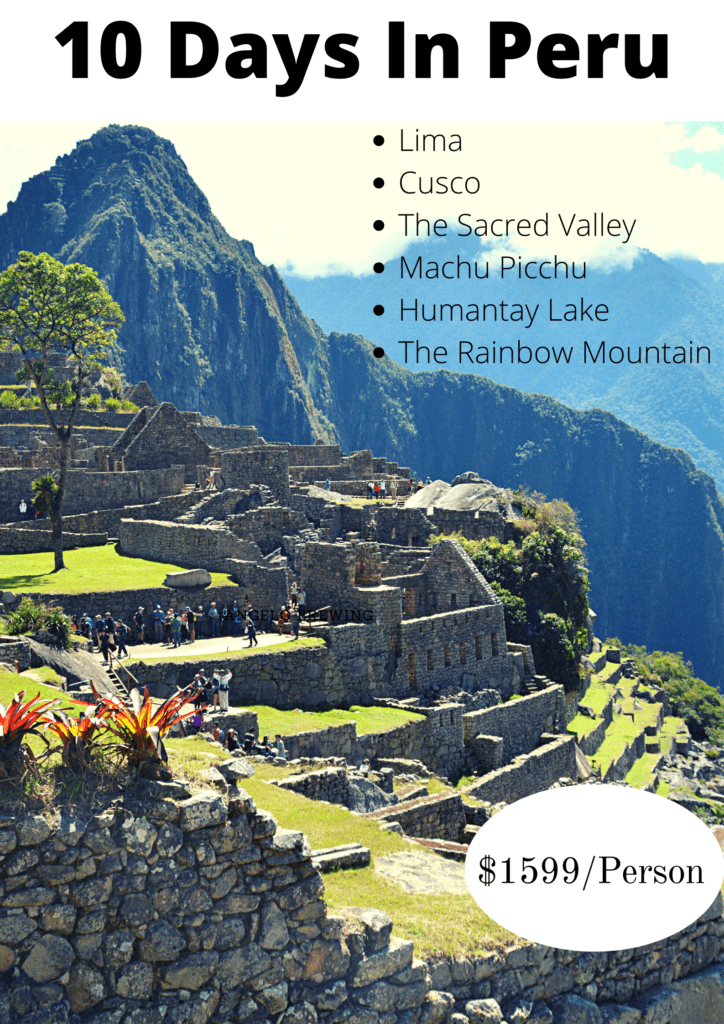The Ausangate Trek
James Bustamante is Native to New York but born to Peruvian parents. He has been traveling throughout Latin America since early 2003 and finally made his home in Peru. James has made his way by eating and traveling through almost every country in Central and South America.
Last Updated on December 16, 2024 by James Bustamante
Today, we will review one of the more obscure hikes in the Peruvian highlands. The Ausangate Trek is a full-filled, off-the-beaten-path hike that can be extended with the hike to Machu Picchu towards the end.
The Ausangate Trek is less popular than the Inca Trail or the Salkantay trek to Machu Picchu.
This day or multi-day hike is quite stunning in its own right, as it takes you through some very off-the-beaten-path locations.
We head through the Cordillera Vilcanota, as the hike takes you through high passes and later on down to the valleys, where we’ll find indigenous people and their Andean villages.
Across the beautiful landscape, you’ll see glaciers, snow-capped peaks, llamas, Alpacas, and crystal-like turquoise lakes.
This mountain range is spectacularly beautiful and worth the hike to see all these locations in one trek.
Below, we will outline some preparations that are needed for the Ausangate trek, as well as the full itinerary for the 9-day version.
We will even go over the section where connecting this hike to a Machu Picchu tour is possible.
The Ausangate Trek Overview
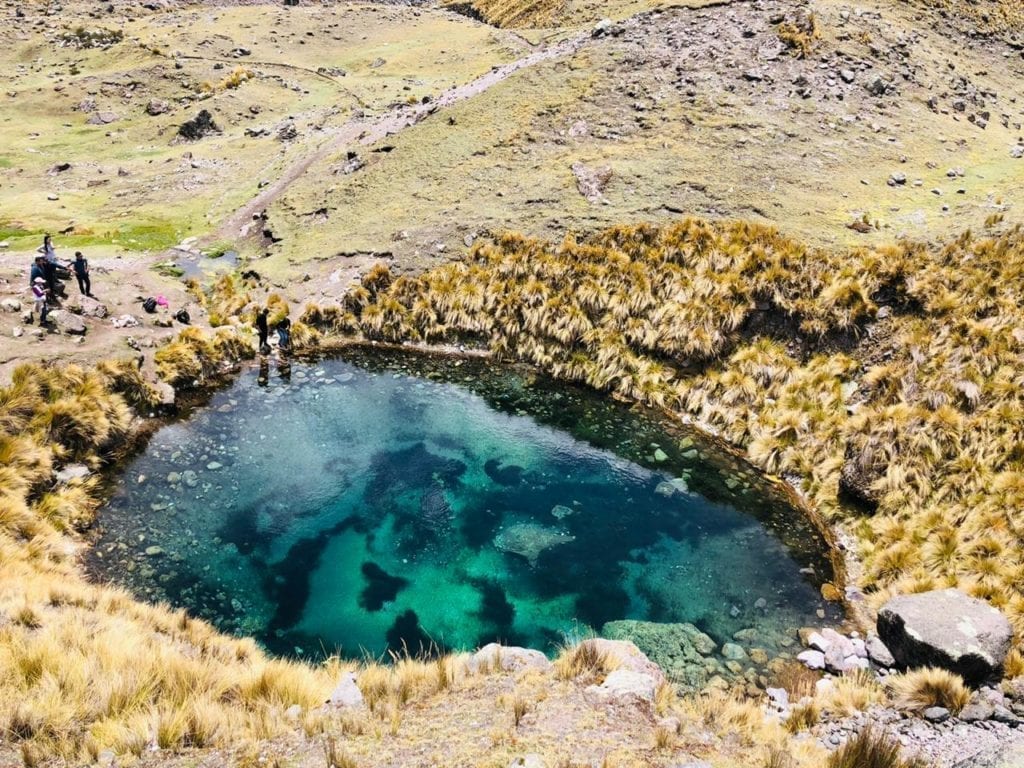
If we head around 63 miles (100 km) to the southeast of the city of Cusco, we will come across the impressive cordillera Vilcanota.
As we travel through the Vilcanota mountain range you will notice the very high peaks, some at well over 20,000 feet (6,000 meters).
Among these massive peaks, we will find the Ausangate at over 20,100 feet (6372m). This makes it the highest mountain in the entire Cusco region.
You can breathe a sigh of relief, the Ausangate trek does not require permits like the one needed to hike the Inca Trail to Machu Picchu.
By comparison, the Ausangate hike is unknown to the mainstream traveler so you’ll likely enjoy a very quiet route the entire time.
A full multi-day hike of the Ausangate will be a 6-day itinerary. It is also possible to extend this trek with a visit to Machu Picchu. We can get into more of this a little late in the Itinerary section.
One main detail that sets the Ausangate apart from something like the Inca trail is the option to ride a horse.
There will be horses to carry camping equipment at all times, the difference is that you will be able to rent one to tide throughout the Ausangate trek due to the accessibility.
The hike is not strictly vertical so horses are a welcome option for trekkers.
That’s not to say there won’t be some rather steep areas where you will have to get off the horse and walk beside it.
It is imperative that you are a confident horseback rider before going with this option. If you don’t think you fit that profile then it’s best to do the trek on foot.

Across the trek, we will encounter a large variety of local flora and fauna. Among these, you can expect to see vicunas, bobcats, Andean condors, and maybe even a Puma.
Along the trail, we will camp out near beautiful Andean lakes so you can expect to wake up to picturesque landscapes.
There are also hot springs throughout the hike so you can expect to have a chance to relax in these thermal waters after a long day of trekking.
From the Ausangate mountain range, we will also be able to see the beautiful Rainbow mountains or as the locals know them “Vinicunca”.
The locals consider The Ausangate mountain in itself a holy place is the deity of Cusco.
Going as far back as the pre-Inca times the natives used this place for worshipping and placing offerings. This actually still takes place today!
Travelers Tip: Every year, there is a celebration called the Qoyllyr Rit’l festival on the opposite side of the Vilcanota mountain range in the Srinagar Valley.
This festival takes solace at the end of May and brings around 10,000 people each year to celebrate the mountain spirit as well as the appearance of Christ on the mountainside.
This celebration further brings into light how the local traditions merged with Christianity which was brought by the Spanish. Mountainside.
So, if you are into local celebrations, make sure to plan your trip between May and June (Inti Raymi – Sun Festival).
Ausangate Trek Difficulty Level
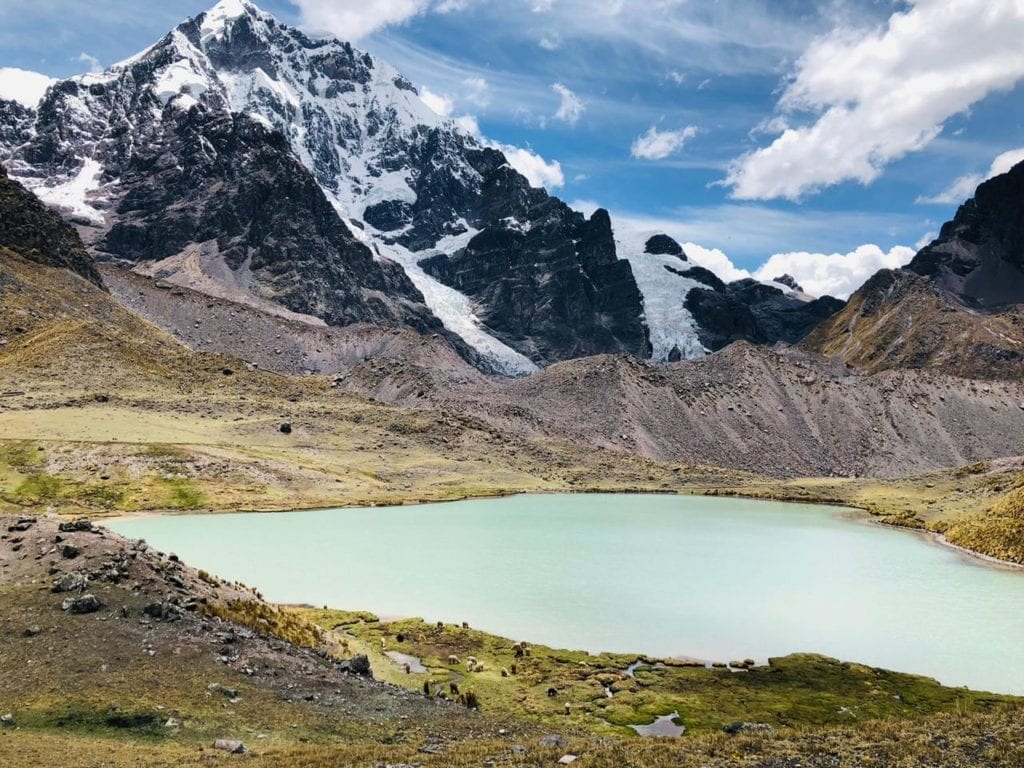
Right off the bat, we can specify that the Ausangate Trek is fairly difficult.
One predominant reason is the elevation you will be subjected to, remember that this Andean hike will have passes that go over 17,000 feet above sea level (5,000 meters).
You will require a pretty good level of fitness to attempt this hike. It is classified as a grade C trek.
This means that the route is considered relatively long and with high elevation.
Consider that you will be trekking through terrain where the altitude will constantly be changing as we move on.
The trail however is very well defined and there will be no problems being able to follow it effectively. This hike is definitely best suited for experienced trekkers.
If you think you can arrive in Cusco and take this hike the following morning, well you aren’t going to enjoy the hike all that much.
All hikes require the traveler to have an appropriate time to acclimate to the elevation but not many do so more than the Ausangate hike.
Andean weather can change very quickly, this is true in particularly high elevation areas. During this hike, you might experience rough weather and even blizzards.
Assuming you have taken a moderate hike before and are in pretty good physical condition then this particular hike can be right up your alley.
The Best Time For The Ausangate Trek
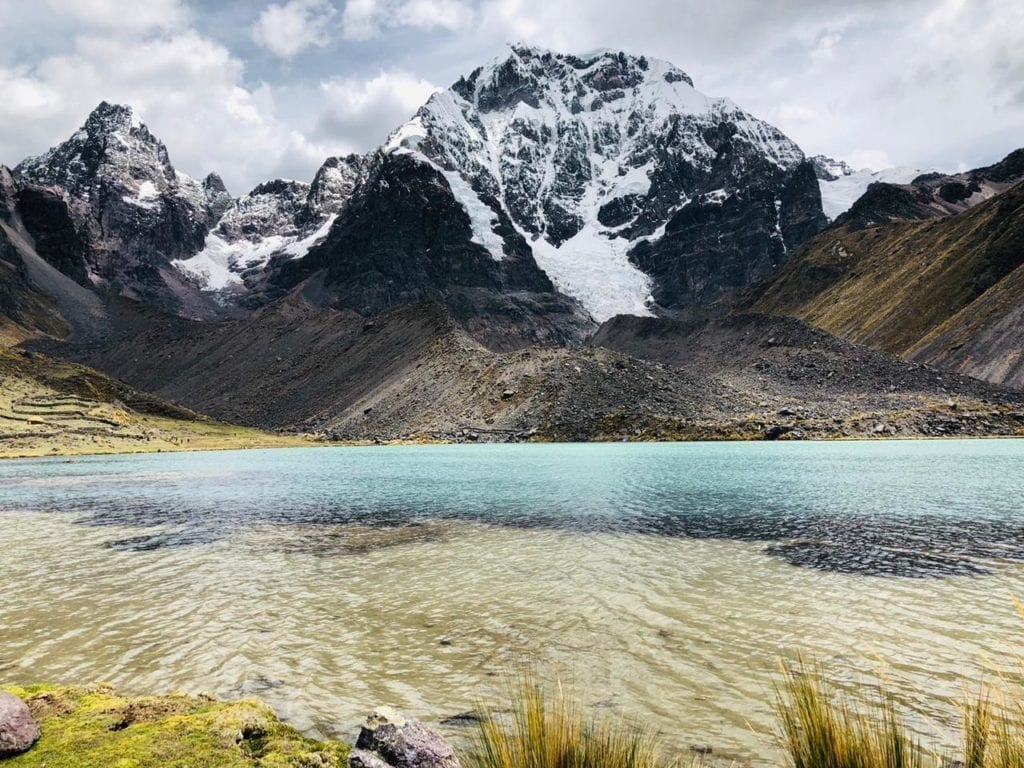
The Ausangate Trek is no different than the Salkantay trek or the Inca trail to Machu Picchu in terms of “when is the best time to hike” said trail.
The dry season runs from April to August, precisely when we recommend taking any multi-day hikes.
You can also take the hike between September – October however there will be early morning showers.
If it is a matter of the number of people on the route that can bother you then fear not, this hike is so extensive and unknown by the mainstream that you will probably never run into another person while on the hike.
Attempting this trek any later in the year will make you have to endure the very cold nights that come with high elevation hiking.
There are groups that will go out from November to December however we do not recommend it unless you are just doing the day hike version.
We also avoid this hike at all costs from late December to February since it is just too rainy to attempt safely.
No matter which month you would like to take the Ausangate trek, there will be a suggested packing list of items you will have to bring along, such as a rain poncho, jackets, sunblock, lip balm, spare socks, sunglasses, etc., as wel.l
The Ausangate Trek Itinerary

Day 1: Ausangate Trek: Cusco to Tinki
Most day tours and multi-day hikes will normally begin in Cusco. From this major Andean city we head southeast to Tinki, this ride can take around 3.5 hours.
We probably stop making stops at the towns of Congate and Qatca.
During this brief break try to have one of the local drinks and see how the villagers display their culture in everyday tasks.
It’s not every day that the native people get to see foreigners visiting their towns so it can be a learning experience on both sides.
Once we have arrived at the town of Tinki we can finally begin the Ausangate hike.
We begin by hiking through the beautiful Vilcanota Valley. Once we reach higher ground you will be able to get a great view of the entire Vilcanota mountain range.
This will include the Colqe Cruz and Ausangate peaks respectively.
We then move on to cross the Mapacho river before finally arriving at the base of the Ausangate mountain.
This area is known for its hot springs so we will camp near Upis.
As with many destinations in the highlands, these thermal baths are the stuff of legends, quite literally.
They are believed to be medicinal by the locals and several travelers come each year to heal.
Day 2: Arapa Mountain Pass
Our second day on this hike begins with the group crossing the Arapa pass situated at over 16,000 feet above sea level (4,850 meters).
This is a point where we suggest you bring out the camera and take a few photographs, you’ll catch the picturesque Ausangate in all its splendor.
Crossing the Arapa pass will take most of the morning. Afterward, we’ll stop for a light lunch before planning out descent into the valley.
On our way down, we will see places like the green lake of Puqa Q’ocha, located at over 15,000 feet above sea level (4,445 meters).
We trek a few more hours before eventually reaching the crystal blue lake of Jatun Piqa Q’ocha where we will make camp for the night.
Day 3: The Palomani Pass
We begin this third day of hiking very early. Today we tackle the Palomini pass so preparation is key.
The Palomini Pass is one of the highest points we’ll come across in this hike at over 16,000 feet above sea level (4,800 meters).
As we push on and keep hiking you will come across several herds of Alpaca and of course Llamas.
These are always a welcome sight for everyone. The Ausangate will also be on your left side so pay close attention as we keep trekking.
As we proceed to get to the top of the pass you will see the majestic peaks of the Mariposa and Caracol mountains.
The Southeast mountain range will also be quite visible by now so make sure to take plenty of pictures.
We continue on and eventually reach the Jampamayo River as well as the Jampa village before arriving at our campsite in Chillca.
The camp is at a slightly lower elevation of 14,000 feet above sea level (4,456 meters).
Day 4: Pampa Jutunpata Trek
As usual, we will start the day quite early. Our hiking program today will be a bit less difficult than previous days since we are heading through the Pampa Jutunpata valley along Lake Tcllacocha.
This valley is one of the best places to try and spot some of the local wildlife.
In this area, you can look around and find Vicunas, Viscachas, and even bobcats if we’re lucky.
As we continue on the hike we eventually reach the Q’ampa pass situated at over 17,000 feet above sea level (5,000 meters).
From this very high point, we will see several lakes scattered throughout the landscape.
They will shimmer with the sunlight and present a blue/green color that matches perfectly with the surroundings.
We then head down on the other side of the mountain and set up camp beside the beautiful lake Q’omercocha.
Day 5: Village of Pajchanta
Today we head to the Pajchanta village. We’ll begin the day with a nice hearty breakfast. Make sure you eat enough to last until lunchtime.
Once we get going we can begin our descent to the highland village of Pajchanta located at 13,000 feet above sea level (4,000 meters).
Once we walk through Pajchanta you’ll notice the village is very focused on herding.
These locals are extremely traditional and live today as they have done so for over 100 years.
This entire region can be considered seismic due to “mostly” dormant volcanoes. This presents the opportunity to visit the thermal baths this village is known for.
Take some time to rest and use these natural hots springs, after 5 days of hiking you deserve it. We will also camp in this Andean town for the night.
Day 6: Trek to Tinki
On our 6th day of the Ausangate Trek we finally head to Tinki in the morning. Once we arrive you pack your items, say goodbye to our guide and your horse, finally you will board the shuttle back to the city of Cusco.
Travelers Tip: An alternative route happens on day 6 of the Ausangate trek.
If you are keen on going for your Machu Picchu tour from this point then it can work out great for you.
The difference lies in the arrival to Tiki on day 6, instead, you would hike from Pajchanta to Armaccocha lagoon. The extended itinerary is below!
Extended Itinerary
Day 6: Setting off from Pajchanta
This second route to the Armaccocha lagoon is fairly short so we will arrive relatively early to our destination.
The scenery is spectacular so make sure to take plenty of pictures.
Among picturesque landscapes would be the snow-capped Nevado Collque Cruz peak, which is right in front of you.
Day 7: The 17,000-foot (4,950-meter)High Lookout Point
We will load up on calories during our breakfast and then head northeast to continue the hike.
You will climb a rather steep shoulder and eventually pass through a narrow path which takes you to a lookout point situated at over 17,000 feet above sea level (4,940 meters).
In this lookout spot, you will see the surrounding mountains in a 360-degree view.
This will include some mountains situated at over 20,000 feet above sea level (6,000 meters).
After taking some once in a lifetime pictures of the surrounding mountains, we move on and descend to Lake Singrenacchocha where we’ll set up camp.
Day 8: Head to Mallma
On day 8 we start strong and continue with our trek.
This is the last day of hiking through the highlands so we have to make the best of it We will hike along the river until we reach Mallma situated at around 14,000 feet above sea level (4,230 meters).
Once we arrive, we can finally rest and have our final lunch on this hike. We then board the shuttle that will take us back to the city of Cusco.
Day 9: Ollantaytambo to Aguanas Calientes
We schedule our driver to pick you up from your hotel early in the morning to drive to the town of Ollantaytambo.
From there, we will board the train and head to the small town of Aguas Calientes, which is at the foot of Machu Picchu.
Conclusion
The Ausangate hike is a fantastic experience that takes plenty of planning and preparation to make it a successful hike.
Remember that no matter if you want to take the Ausangate trek, the Rainbow mountain day tour, or if you want to go from Lima to Machu Picchu in a single day.
Our travel advisers are standing by ready to assist you with your trip. Make your Peru trip a memorable one.
Frequently Asked Questions About the Ausangate Trek
When is the best time to take the Ausangate Trek?
The best time to take this trek is between late April – August.
Is the Ausangate trek very difficult?
The Ausangate Trek is considered a moderate-difficulty hike. It requires a certain fitness level but anyone can take the hike as long as they have been properly acclimated to the elevation.Does the Ausangate trek include meals?
Yes. There will be a cook on the hike that will be in charge of preparing all your meals.
Is there an Ausangate day hike?
Yes, an Asangate day hike starts at 6:00 and ends back in Cusco by 7:00 pm.
How high will the elevation be on the Ausangate trek?
We will reach points of up to 17,000 feet on many passes of the hike,
Can I visit Machu Picchu after the Ausangate Trek?
Yes. We can finish the Ausangate trek and then head to Cusco or Ollantaytambo to take the train to Aguas Calientes. We then head to Machu Picchu for our guided tour on the same day or on the following morning.
